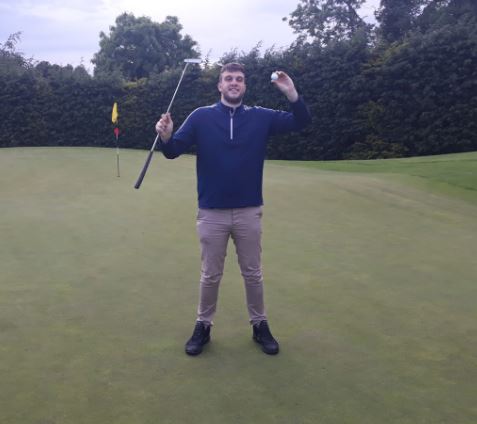Muscle Back Vs. Cavity Back Irons – Pros, Cons And Who Should Use Each
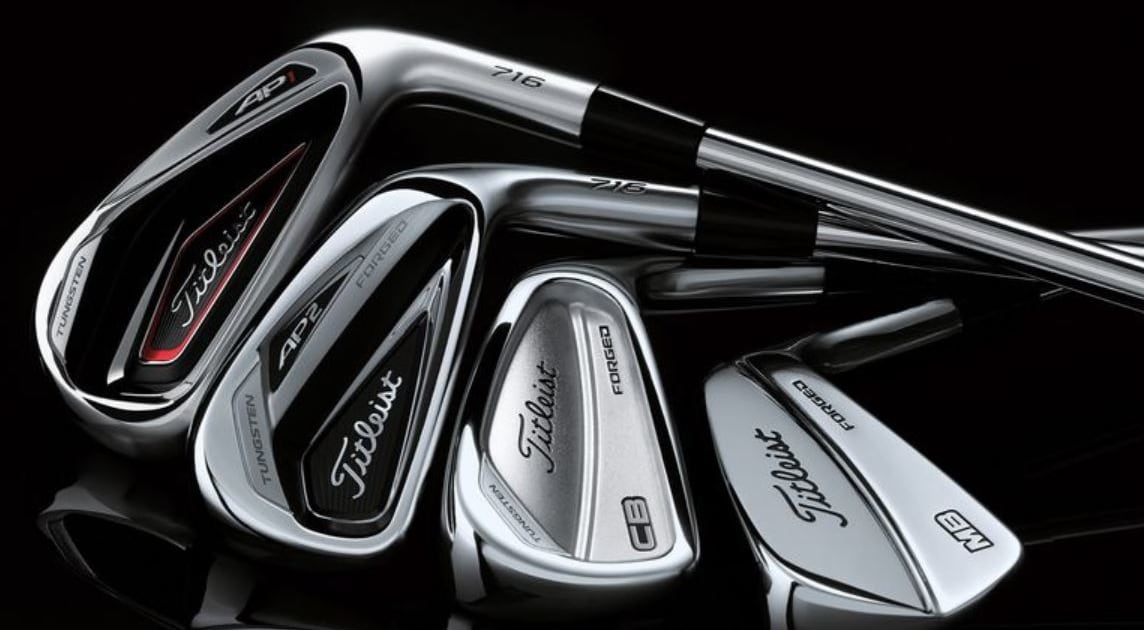
As golfers improve the search for the most forgiving and longest clubs, goes out the window. With each stroke shaved off, the game players look for something more. Something hard to describe to new players.
Feel, workability; playability are all things that the better players continually seek. These are the things that make the difference between an 83 and a 79.
Muscle Back or Blade Irons have been known to differ from Cavity Back irons in many ways.
Are you ready for blades? Is it time to make the switch? We will give you some information that will help make sure your decision is the right one.
What Is A Muscle Back Iron?
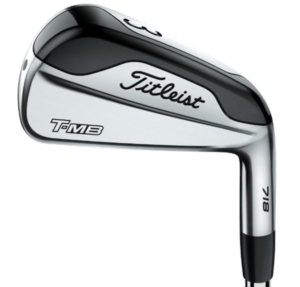
A muscle back is an iron that originated from the original blade irons. The blades were skinny and left a player little to no forgiveness.
What is a Cavity Back Iron?
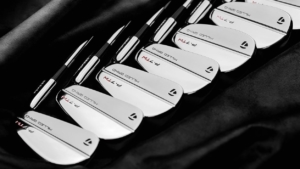
Cavity back irons have been developed to be a much more forgiving iron than a muscle back or blade. Cavity back irons tend to be thick and hollow. The back part of the iron is usually carved out like a cavity.
Muscle Back Pros and Cons
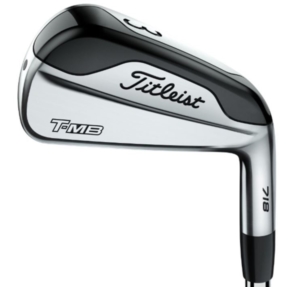
Pros
- Top-Down View: Thin looks to appeal to the better player. Most lower handicap golfers don’t like looking at a clunky iron when the idea in their head is to pick the shot clean off the grass and send it to its target. They don’t need to picture launching the ball high as it will naturally travel high because of their swing speeds.
- Feel: The muscle-back irons have incredible feel when it comes to being able to know how you hit your shot. With a muscle back, if you miss it, you will know. If your shot is going to land twenty yards short, you will know it before it lands. On the flip side, when you hit it perfectly, you will know it and can learn to repeat the swing you did to encourage that feeling.
- Workability: Because of the incredible feel that the muscle back irons offer, you can hit the ball left to right, right to left, play around with launch angle, etc. You can do whatever you need to with these clubs and get the feedback that you want.
- Distance and Forgiveness: Years ago, when the first muscle back irons were produced, they were not very forgiving and indeed not long. As the years have gone on things, have changed, and there are models available that will be long, forgiving, and offer the feel you need.
Cons
- Cost: Because of the design process involved with developing and producing muscle-back irons, they tend to cost quite a bit more than a set of cavity back high to mid handicapper options.
- Forgiveness: Most muscle-back irons are forgiving but not nearly as forgiving as cavity backs. To give better players the feedback they need, the irons cannot be overly lenient.
- Consistency: Muscle back irons are not nearly as consistent as a cavity back. A shot missed slightly off the center of the clubface could end up well short of your target. The same swing with a cavity back may not cost you very many yards.
Cavity Back Pros and Cons
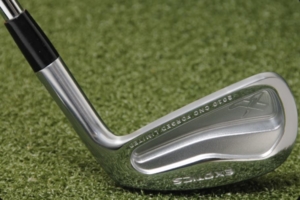
Pros
- Distance: Cavity back irons with their hollow construction have been known to help players increase clubhead speed and, ultimately, ball speed.
- Forgiveness: Because of the size of the clubhead and the increase in the size of the sweet spot, a cavity back iron is known to be extremely forgiving.
- Launch: The sole of the cavity back iron is often wider, and the center of gravity is quite a bit lower to help create a much higher loft right from the start. Something that muscle back irons don’t provide.
- Look: The cavity back iron has a look that makes it seem more natural to hit. Mid to high handicap players that look down and see a larger oversized club head will have more confidence when it comes to the shot they are about to play.
- Consistency: Cavity back irons will help you to produce the same shot over and over again, even if your swing is slightly off.
Cons
- Feel: Although significant improvements have been made, the feel on cavity back irons will not match the feeling on a muscle back irons.
- Workability: It is challenging to hit a fade or a draw (intentionally) with the cavity back irons. If you are looking to work the ball quite a bit, you will become frustrated trying to do so with a cavity back club in your hand.
Who Are Muscle Backs For?
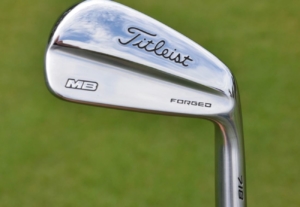
Lower handicap players will do best with muscle back and blades. ALthough mid to high handicappers seeking incredible feel will play with the muscle back clubs, they will have a harder time getting the consistency they need.
Who Are Cavity Backs For?
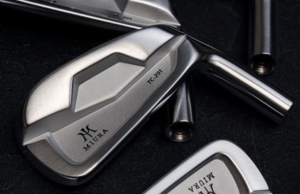
Mid to high handicap players and beginners. If you are looking to hit the ball long and dream of being able to hit something straight, then the cavity back is a perfect fit for you.
When To Know When To Switch To Muscle Backs
Most golf professionals will tell you that if you are not breaking 80 consistently, you probably don’t need to be swinging a muscle back. Although the clubs may feel better and when you hit them solid, nothing will compare, the question is going to be how often will you catch them correctly. For most players shooting in the mid to low 80’s, there will be several mis-hits throughout every round. If those mis-hits are amplified by playing with a less forgiving club, it could hurt your score, not help.
Another time that we think it makes sense to switch to muscle back clubs is when you commit to better your game and lower your scores. If you are continuously working on your game, taking lessons, practicing, and your scores are hovering around the high seventies and low eighties, it could very likely be time to switch. The change in the feel may help you perfect those little issues you have been working on in your swing.
Blades vs. Cavity Back For Distance
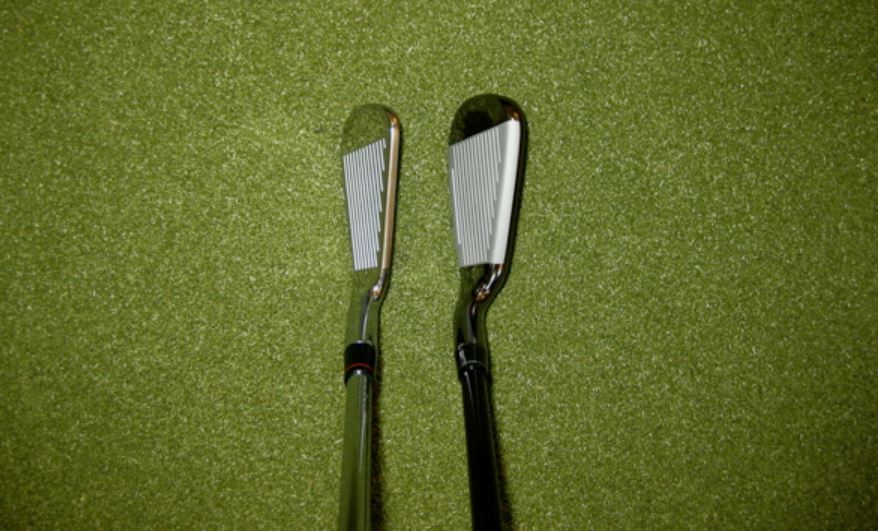
Just a few years ago, the answer to this question would have hands down been cavity back irons. As cavity back irons improve, they feel better, and as muscle back irons improve, they tend to offer a player more distance. In the years past lower handicap players would have to choose between distance or feel, and that gap seems to be narrowing.
Blades Vs. Cavity Back Wedges
It took a long time for wedges to be offered in a cavity back style. The truth is that players who need cavity back for forgiveness and distance really can use these benefits in their wedges as well. With the short game being the most critical area of your game for scoring, it is essential to match your wedges with your playing ability.
Some wedges are now also offered in graphite shafts to make sure that they match your swing speed as well.
Another question that goes along with this is in regards to wedges that match your set. Generally speaking, a player’s set of irons will very likely stop at a pitching wedge or gap wedge. For a cavity back mid handicappers set, you can see clubs go all the way down to the lob wedge in the matching set configuration.
Although some of this can be a matter of preference, every player needs to have wedges they feel very confident with. If the cavity back more massive sole wedge gives you that confidence you need out of a bunker, then that is fine. If, however, you like the thin look of a wedge that can offer a great deal of spin, save a spot in your bag for a blade style wedge.
Do Tour Pros Use Cavity Back Irons
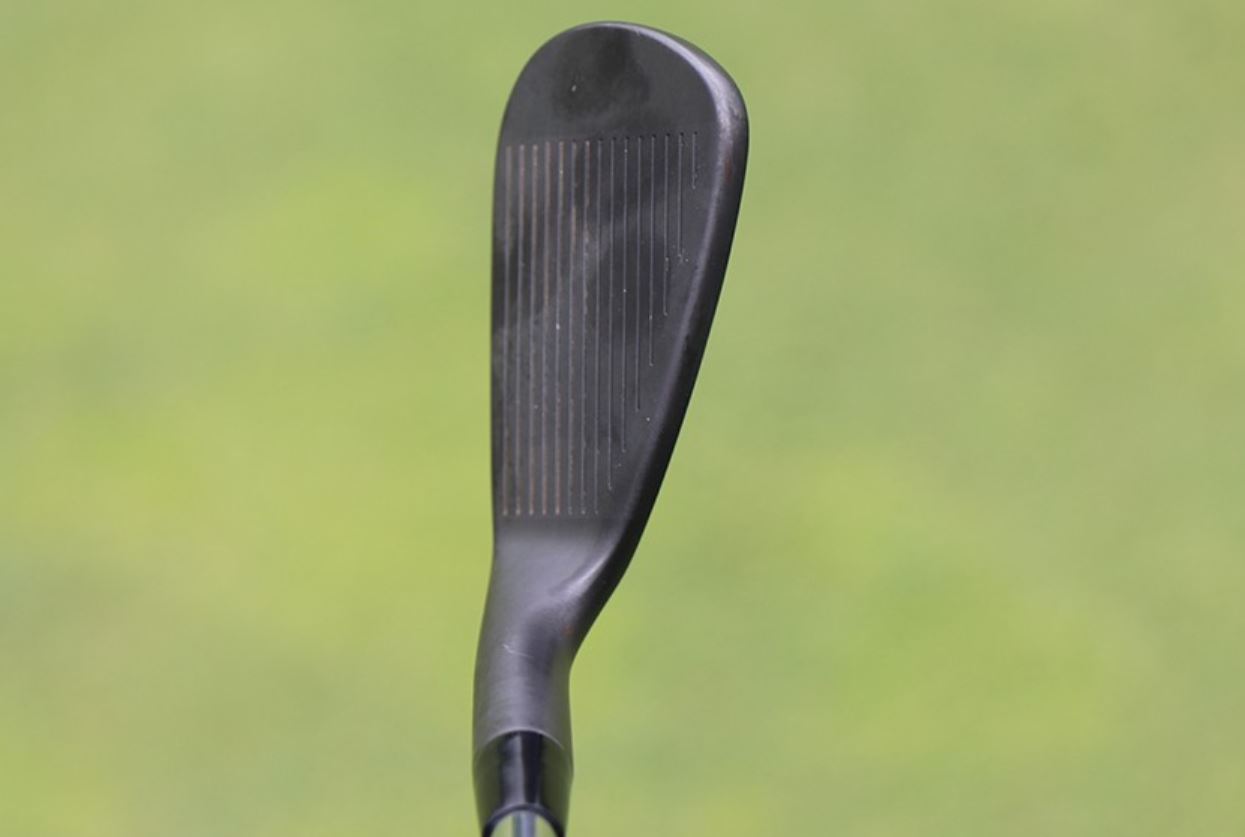
Most of the time, tour pros like the feel and workability of a muscle back. The only time that you will see a cavity back iron in a pro’s bag would be for a long iron. With longer irons like a 2, 3, and 4 iron being quite a bit less forgiving, some pros will look for the distance and forgiveness as opposed to feel on these clubs.
What Are The Most Forgiving Cavity Back Irons?
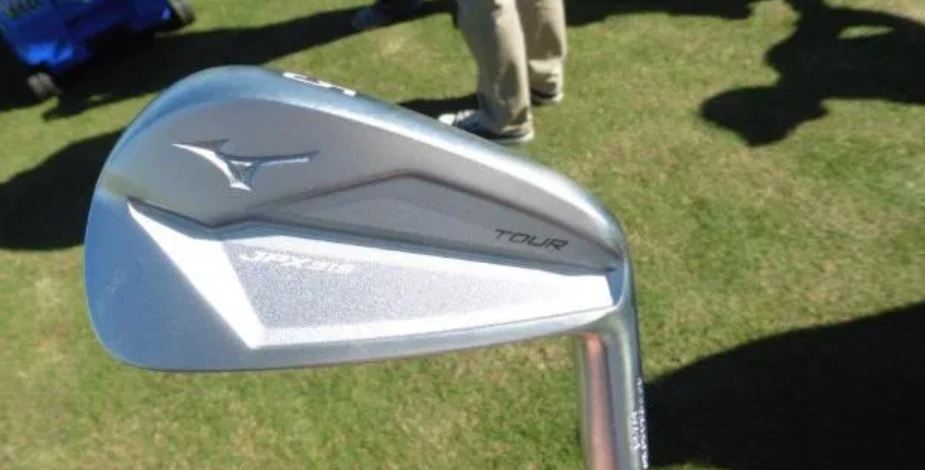
There are a few irons out that are very forgiving and will work well for mid to high handicap players. When looking for a manufacturer that produces forgiving cavity back irons, you can always find something with TaylorMade, Callaway and Cobra.
- Cobra SpeedZone Iron Sets: Extremely forgiving cavity back iron with plenty of distance, also available in the one length option for the player looking for consistency in setup. Long-distance on these irons and steel or graphite shaft options available.
- TaylorMade Sim Max Iron Set: Available in the SIM MAX and SIM MAX OS, this club offers incredible ball speed and distance. Featuring TaylorMade’s twist face technology, this club will help you get the clubface square at impact and send you on your way to the pin.
- Callaway Mavrik Max: The Mavrik Max iron set is all about ball speed and launch. These irons are built to help you get the ball up in the air and have it fly a long way. Callaway used artificial intelligence and a flash face on this iron to make it one of the longest and most forgiving irons Callaway has ever made.
What Are The Best Muscle Back Irons?
When it comes to players irons, the names to watch have always been Titleist and Mizuno. This year Titleist has several new models out that will work well for the lowest handicap players.
- Titleist 620 MB is a real muscle back iron with little to no offset. This club looks like a players iron and performs like one as well. This is a classic Titleist model with some modern advancements. If you value feel over all things, this is the iron for you. Available in 3-PW, this set will cost you quite a bit more than a cavity back iron set, but if it is what your game needs, it will be worth it.
- Mizuno MP 20 Iron Set is again an upgrade of a classic. The Mizuno MP blade series has led the way for players for years. These irons have a graduated tapered blade shape to provide a more penetrating ball flight as the loft in the clubs increases. Just like the Titleist, this classic muscle back is available in 3-PW with lots of custom shaft options for the player who knows exactly what they need.
What if I’m Stuck Between Blade and Cavity Back?
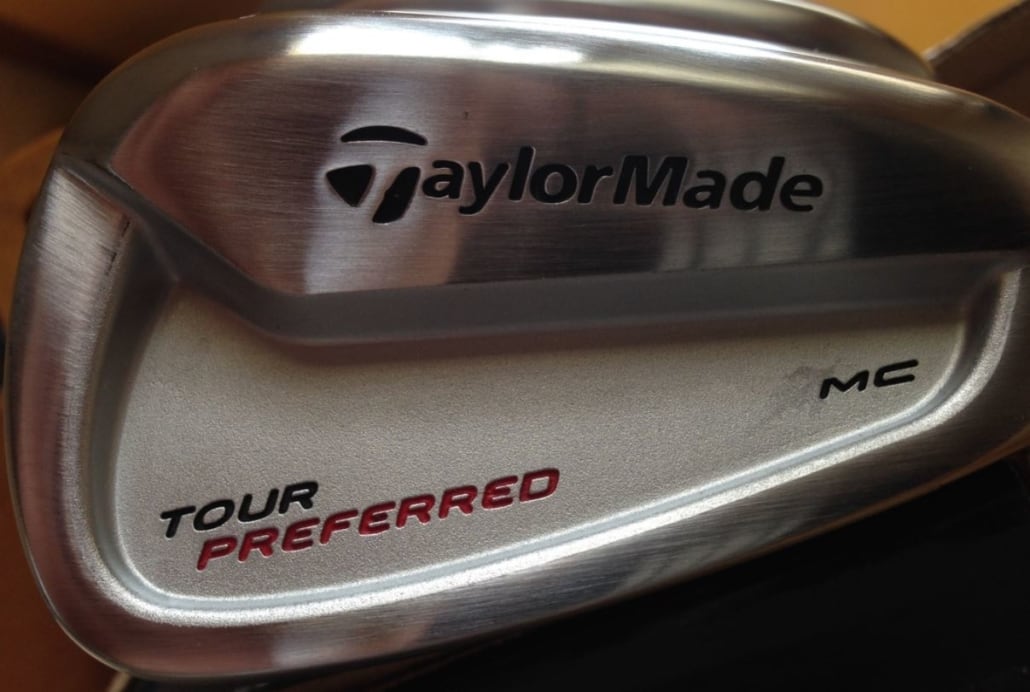
This is an excellent time to be stuck between these two iron profiles. Companies like Titleist and Mizuno put out several iron sets with lots of feel and workability that also have distance and forgiveness. They won’t be considered true muscle backs and will not truly be cavity backs either, but they could be the exact mix you need to lower your scores.
Conclusion
As we demonstrated, both cavity back and muscle back irons have their pros and cons. If you are a player looking to get down to a single-digit handicap, you will very likely need the feel and performance of that muscle back. If you are a 15 handicap and perfectly fine staying one, don’t try to make the game harder on yourself. Work on hitting the ball straight, keep continuing to improve your ball flight and accuracy.
In the next few years, we will see cavity back irons move towards muscle back, and muscle back move towards cavity back. At some point, the gap between the two will be very now and probably quite confusing.
Which iron set did you end up with this year? Do you think you could ever give up your blades? Are you ready to make the switch to a muscle back?

